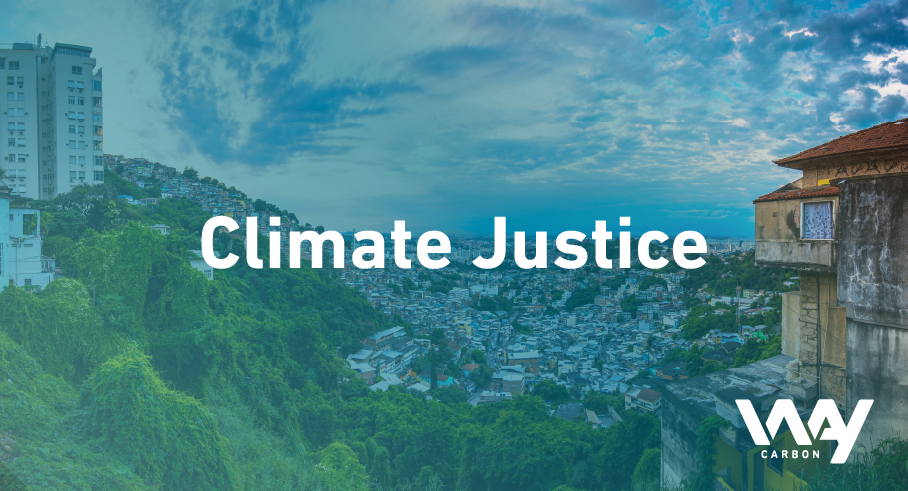Environmental destruction: a problem with disproportionate consequences
There is a scientific consensus that the planet is warming up¹. There is also consensus the climate change is being influenced by the greenhouse gas (GHG) emissions increase related to human activities. The consequences of these increases generate concern, since they affect the balance of nature and result in health risks, loss of biodiversity, food insecurity, increased flooding and storms, among other damages.
The intensity of increase effects in the planet’s temperature, however, does not occur in a proportional manner, even though it is collective. Poorer regions, with few resources, are often unable to avoid or reduce these effects, as well as create opportunities for adaptation, and thus tend to be more impacted. These areas, in general, are home to people with well-defined racial-ethnic, gender, and socioeconomic backgrounds.
The concern with the disproportionality in which environmental degradation affects different groups of people is the focus of the search to remedy these disparities, present in the environmental justice and climate justice concepts.
The ‘environmental justice’ term emerged in the 1990s from a series of movements in the United States. One of the initial milestones was the ‘class action’ lawsuit filed by Margaret Bean and Houston’s residents, Texas, against a waste company which had permission to open a landfill in a middle-class, mostly African-descendent neighborhood.
According to Acselrad, Herculano and Pádua (2004), the concept of environmental justice encompasses principles aimed at ensuring the degradation consequences of the collective space are not suffered in a disproportionate manner by any group of people – whether racial, ethnic or class.
Driven by the climate emergency, the climate justice concept emerges as one more front to ensure parity and prioritization to those most vulnerable to the destruction of nature. Milanez and Fonseca (2010) explain the term is a concept of environmental justice development, often used to refer to the asymmetry in relation to the impacts suffered and the responsibilities for the causes and effects of climate change.
Accountability for causes and effects is one of the central themes in the quest for environmental and climate justice. The places that are – and tend to continue – suffering from the temperature increase on the planet are those, historically, have not contributed – or not significantly – to the GHG emissions increase. It is necessary, in this context, that responsible for these antecedents assume their onus and promote actions quickly to mitigate and reduce the damage.
Discussing response mechanisms to climate change is fundamental and conditioning for the life maintenance on the planet. However, given the disproportion of consequences, it is fundamental that those who will be penalized more rigidly have priority since, many times, their participation in the activities that contribute to the planet’s temperature alteration is inversely proportional to the reactions they will receive due to this.
Inequality as a setback for environmental and climate justice
In a context of acute social inequality, as development and preservation of ecosystems are treated as antagonistic, historically marginalized groups find themselves increasingly exposed to the environmental destruction consequences, and under constant threat of not having their human rights guaranteed.
Social inequality is not a recent process. It goes back to historical periods marked by the exploitation and enslavement of African-descendent and indigenous populations. These facts are responsible for creating bases that accentuate, until today, the condition of exclusion of these populations, generating absence of basic services, scarce public investments, difficulty of access to culture and education, besides the poor distribution of income.
The consequences of inequality, visible in the large urban centers, are visible in the peripheries: hunger, violence, mortality, malnutrition, high unemployment, poor infrastructure, and housing in inappropriate places. In the regions where these conjunctures are emphasized, the effects of extreme climate events such as floods, inundations, landslides, and flooding are also more noticeable.
Brazil, according to a study released by the World Inequality Lab, is one of the most unequal countries in the world. Here, the richest 10% earn almost 59% of the total national income². This abyss of social inequality may become even greater with the estimated 83% decrease in the average income due to the worsening of the climate crisis, according to the report of the Intergovernmental Panel on Climate Change (IPCC), published by Folha de São Paulo³.
Besides the structural damages caused by extreme events, the climate crisis also affects the productive capacity and energy generation, with an increase in droughts and changes in rainfall volumes, since most of the country’s energy matrix is hydroelectric⁴. Products – such as food, for example – can have their prices altered due to the variation in the cost of energy or the impact on inputs – coming from agriculture – affecting the purchasing power of the population and often becoming unaffordable for the poorest people.This point is fundamental to understand the need for less delay in protecting those most vulnerable to environmental degradation and the relationship of this issue with others such as hunger and food insecurity.
The lack of environmental justice triggers the emergence of a social phenomenon called environmental racism, which consists of discrimination against vulnerable populations, peripheralized or composed of ethnic minorities. The creation of this term was attributed to the African-American activist Benjamin Franklin Chavis, between the 1950s and 1960s.
Ways to strengthen the agenda
In November 2022, in Sharm El Sheikh, Egypt, it was announced at the 27th Conference of the Parties (COP) the creation of a loss and damage fund for vulnerable countries most impacted by climate change[4]. The inclusion of this point in the final text of the COP is an advance for the issue of climate justice.
Global agreements and commitments are fundamental to act on the climate crisis. The guarantee of environmental and climate justice, however, must be deployed at different levels and among different actors, since collective responsibility is one of the ways to strengthen this agenda.
Civil society stands out among the actors that collectively participate in actions for environmental and climate justice. Its protagonism consists of its capacity to bring together different agendas, broadening diversity, and articulating the most urgent demands of groups that are placed on the margins. The collective voices of civil society contribute to greater governmental pressure, at local and global levels, as well as to the greater ambition of climate commitments.
Public institutions must ensure this justice through public policies that mitigate and adapt cities and other territories to these climate changes that are already happening. As an example of this, we have several Brazilian cities that have started their climate action plan, in which the civil society is responsible for monitoring and demanding the development of these plans and the development of the environmental and climate agenda in their regions, states and/or municipalities, as well as contributing with social organizations that are amplifying this discussion.
Moreover, this agenda can and needs to be strengthened through private initiative. Companies have been demanded to gain protagonism in the climate agenda, focusing on reducing the negative externalities caused by their activities. In this way, companies can support climate justice by making emission reduction commitments – preferably science-based targets (SBT) or NetZero, as well as contributing with vulnerable populations near their operations to build capacity on climate issues and support these communities to create technologies and innovations to mitigate the effects of the climate crisis in their territories.
In light of the above, it is clear that climate justice is a critical multistakeholder agenda. Addressing these effects at this point may still be an opportunity for many actors, while for some, it is a matter of survival. Having collective urgency, involving governments, companies, and civil society to deal with this reality in a strategic way, is the best way to make significant advances in ensuring this justice, expanding gains, reducing costs, and mitigating risks for people, businesses, and the planet.
Bibliographic references
¹ Available at: <https://climate.nasa.gov/scientific-consensus/>. Acesso em: 09/01/2023.
²Available at:
³ Available at:
⁴Available at:
5 Available at https://www.wsj.com/articles/cop27-agrees-on-loss-and-damage-fund-for-vulnerable-countries-officials-say-11668866219?mod=hp_lead_pos2 Accessed on 01/16/2023.
ACSELRAD, Henri; HERCULANO, Selene; PÁDUA, José Augusto. Justiça ambiental e cidadania. Rio de Janeiro: Relumé Dumará, Ford Foundation, 2004.
MILANEZ, Bruno; FONSECA, Igor Ferraz da. Justiça climática e eventos climáticos extremos: o caso das enchentes no Brasil. Boletim Regional, Urbano e Ambiental – Articles. IPEA, 2010. Available at https://repositorio.ipea.gov.br/handle/11058/5554









